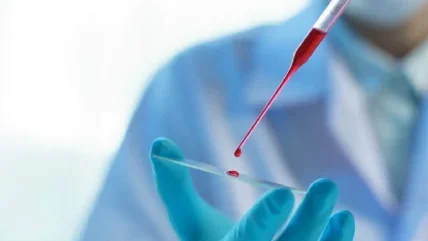
A team of researchers at Aston University in Birmingham, UK, has developed a new technique that uses light to provide a rapid, affordable, and less painful method to detect prostate cancer.
The team led by Professor Igor Meglinski from Aston University’s Institute of Photonic Technologies developed the method that analyses crystals in dehydrated blood.
Their research paper, titled: “Insights into polycrystalline microstructure of blood films with 3D Mueller matrix imaging approach”, has been published in the Nature journal Scientific Reports.
In the research, Meglinski used a new polarisation-based image reconstruction technique to analyse polycrystalline structures in dried blood samples.
The publication said the new technique is considered less traumatic and risky for patients, as it uses blood samples instead of tissue biopsies.
Professor Meglinski said: “Our study introduces a pioneering technique to the liquid biopsy domain, aligning with the ongoing quest for non-invasive, reliable and efficient diagnostic methods.
“A key advancement in our study is the characterisation of the mean, variance, skewness, and kurtosis of distributions with the cells which is crucial for identifying significant differences between healthy and cancerous samples.
“This breakthrough opens new avenues for cancer diagnosis and monitoring, representing a substantial leap forward in personalised medicine and oncology.”
According to the publication, the proteins in blood change their shape and orientation during the early stages of cancer.
The research team used changes in the proteins’ tertiary structure, together with its quaternary structure, which defines how different proteins join together, to detect and classify cells.
They conducted a detailed layer-by-layer analysis of dry blood smears, which play a key role in identifying significant differences between healthy and cancerous samples.
The researchers analysed 108 blood film samples from three groups of equal sizes.
One group comprised healthy volunteers, the other had those with prostate cancer and the third group with those having the illness and had cells that were more likely to aggressively spread.
The study results showed a 90% accuracy rate for both early diagnosis and classification of cancer, which is superior to existing screening methods.
Meglinski added: “This high level of precision, combined with the non-invasive nature of the technique, marks a significant advancement in liquid biopsy technology.
“It holds immense potential for revolutionising cancer diagnosis, early detection, patient stratification and monitoring, thereby greatly enhancing patient care and treatment outcomes.
“This study also presents a testament to the resilience and support of our Ukrainian colleagues involved in the research, especially in light of the ongoing conflict in Ukraine.”






